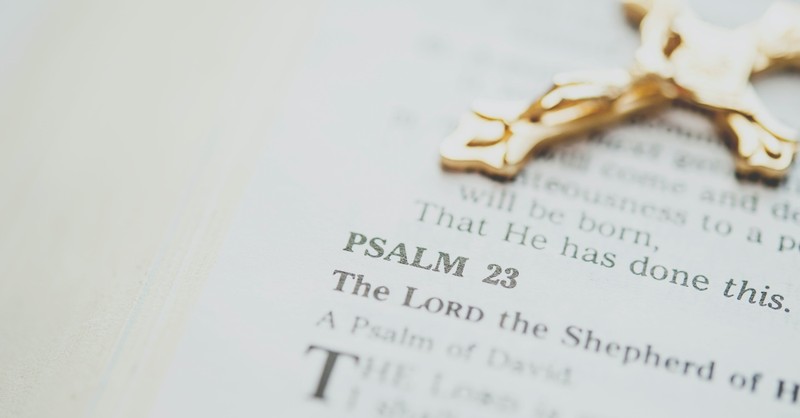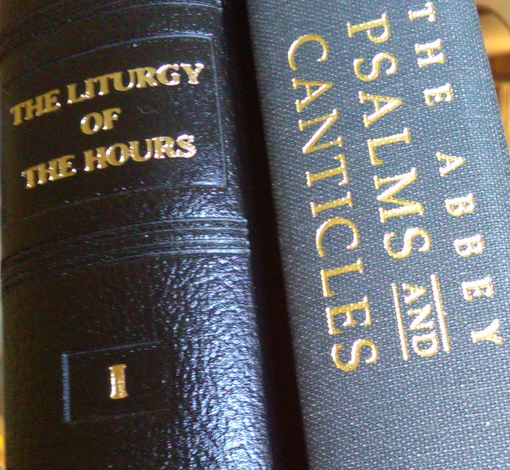 In Part II, we discussed one reason for difference in texts: the translation methods of formal equivalence and dynamic equivalence. The other main reason for differences in translation is the date of publication of a liturgical book and which set of psalms was included in it. If we were to look at the Liturgy of the Hours (1974), the Lectionary (1998), the Order of Celebrating Matrimony (2016), and the Order of Baptism of Children (2020), those four books have four different sets of translations of the psalms: the Grail (1963), Revised NAB Psalter (1998), Revised Grail Psalms (2010), and the Abbey Psalms and Canticles (2018), respectively. And since all of these are approved by the Vatican over the years, they can be utilized in any liturgy. Let’s look briefly at the background of these translations.
In Part II, we discussed one reason for difference in texts: the translation methods of formal equivalence and dynamic equivalence. The other main reason for differences in translation is the date of publication of a liturgical book and which set of psalms was included in it. If we were to look at the Liturgy of the Hours (1974), the Lectionary (1998), the Order of Celebrating Matrimony (2016), and the Order of Baptism of Children (2020), those four books have four different sets of translations of the psalms: the Grail (1963), Revised NAB Psalter (1998), Revised Grail Psalms (2010), and the Abbey Psalms and Canticles (2018), respectively. And since all of these are approved by the Vatican over the years, they can be utilized in any liturgy. Let’s look briefly at the background of these translations.
The Grail: This translation came from a group in England called the Ladies of the Grail. They sought to create a translation of the psalms from the arranged in a sprung rhythm, meaning that the singing or recitation would imitate the rhythm of natural speech. The translation was completed in 1963 and was very successful—the text was easily understood and the poetic rhythm was straightforward. It was adopted in 1973 as the official psalter for The Liturgy of the Hours and it remains as such to this day. The drawback of the translation is that the decision to hold strictly to the sprung rhythm, the translators had to paraphrase some of the Hebrew source texts.
Revised NAB Psalter: This translation came after a 1991 translation of the Book of Psalms was rejected for liturgical use by the Vatican due to extensive use of both vertical (i.e. “God” instead of “Father” or “Lord” instead of “Son”) and horizontal (i.e. “they” instead of “men” or “person” instead of “he”) gender-neutral language. The translation is very close to a word-for-word (formal equivalence). The downside of this translation is that it can be very wordy and thus difficult to set to music and also sing. An interesting note: this translation is not in any published Bibles—it was made only for liturgical use!
Revised Grail Psalms (RGP): Once Liturgiam Authenticam was promulgated, the need to revise the original Grail Psalms was evident due to the paraphrasing of some texts. Liturgiam Authenticam also required that all liturgical books would eventually utilize the same translations so there would not be the problem noted above (four books with four different translations). Abbot Gregory Polan of Conception Abbey in Missouri, an Old Testament scholar, undertook the project of revising the original Grail with using the Hebrew Masoretic and Greek Septuagint texts. Throughout the process, he consulted the Vatican and international sources to ensure they would meet the requirements of Liturgiam Authenticam while also being easily sung like the original Grail. This translation was used for all the psalm antiphons in the Roman Missal.
Abbey Psalms and Canticles: When the RGP came back with approval from the Vatican, there were over 100 changes made by the Holy See which disrupted the lyrical flow of some psalms. The USCCB voted in 2014 to make another translation of the RGP and it was approved by the Vatican in 2018. From this point forward, all liturgical books published in the United States will utilize the Abbey Psalms and Canticles.
changes made by the Holy See which disrupted the lyrical flow of some psalms. The USCCB voted in 2014 to make another translation of the RGP and it was approved by the Vatican in 2018. From this point forward, all liturgical books published in the United States will utilize the Abbey Psalms and Canticles.
We regularly utilize all but the Abbey Psalms & Canticles as I have not yet purchased any psalm collections using that translation. When selecting a psalm setting on any given day, I consult many collections to pick which setting will help our community pray and worship most fully. The collections vary in which translation they use and the chosen setting also depends on the musicians who will proclaim it: do we need a setting for a cantor, choir, contemporary, bells, and/or brass? It is not always a simple task and I rarely default to the same setting I used for that same celebration in previous years. Over time, we will gradually utilizing more of the Abbey Psalms & Canticles since that translation is highly accurate, “sings” better, and will be used in all future liturgical books.
I hope this multi-part explanation has been informative and helpful in understanding about the translations of our liturgical books and how the psalms are selected. For another reference in the translations, here is Psalm 92:15-16 which we pray today. The cantor will be proclaiming the Lectionary (R-NAB) translation, but you can compare it to the Grail and Abbey translations as well.
|
Grail (1963) Still bearing fruit when they are old, still full of sap, still green, To proclaim that the Lord is just. In him, my rock, there is no wrong. |
Revised NAB (1998) They shall bear fruit even in old age; vigorous and sturdy shall they be. Declaring how just is the Lord, my rock, in whom there is no wrong. |
Abbey Psalms & Canticles (2018) They still bear fruit when they are old, still full of sap, still green, To proclaim that the Lord is upright. In him, my rock, there is no wrong. |


Comments
There are no comments yet - be the first one to comment: